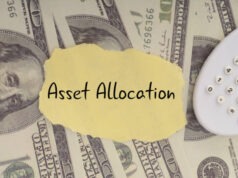
Investors do not exchange specific shares of stock when they trade options. Instead, they trade contracts that specify the terms and circumstances under which stocks and other securities may be purchased or sold. In addition, there are many significant options trading techniques that investors frequently employ while trading options.
Acquiring a solid foundation in financial terms is essential for success and profitability in options trading, as you can discuss strategies, analyse market trends, and seek advice from professionals more confidently.
Before you jump into the realm of options trading, familiarise yourself with these key financial terms that will help you navigate the market like a pro.
Call and put options
An option contract known as a “call option” offers the buyer the right to acquire shares of stocks or another asset at a specific price referred to as the “strike price.” whereas a put option grants the buyer the authority to sell shares of a stock by a given date at the strike price.
Strike price
It is the price at which an option contract can be exercised. Knowing the strike price is crucial for determining your potential profit or loss. The striking price of a call option is the cost at which a buyer of the contract’s underlying stock may be purchased. The strike price of a put option is the price at which the underlying stock may be sold.
Implied volatility
Volatility is an indicator of tracking fluctuations in the prices of stock throughout trading sessions. The future direction a stock’s price may take can be gauged or estimated using implied volatility. When the implied volatility of a stock drops significantly and impacts the value of an option, this is known as a volatility crush. By a negative trend, we specifically mean one that might reduce the value of a call or put option. Understanding implied volatility can help you assess an options trade’s potential risk and reward.
In-the-money and out-of-the-money options
In-the-money options have intrinsic value, meaning they would result in a profit if exercised immediately. On the other hand, out-of-the-money options have no intrinsic value and would not be profitable if exercised.
For instance, assume you put a call option to buy a stock at US$ 60 per share while the stock trades at US$70 per share. You would be profiting by US$ 10 per share or in the money.
Premium
This is the price you pay to purchase an option contract. Various factors influence the premium, including the strike price, expiration date, and implied volatility. The option premium must be calculated by adding the underlying financial asset’s intrinsic, extrinsic, and volatility values to an option contract. Option writers use this premium to protect their holdings. By using the profits from selling options contracts, they may lessen the effects of a negative occurrence, such as a decline in the value of the securities in their portfolio. Additionally, this premium may contribute to boosting their investment results.
Conclusion
The ability to effectively analyse financial statements and reports and make judgements about their option investments is made possible by traders with a firm knowledge of financial terminology. This information also enables traders to assess possible rewards and comprehend the risks of different options strategies.
Investors who believe an asset’s price will increase or decrease or wish to try to reduce the risk associated with assets they already own may find trading options intriguing. By understanding these critical financial terms, you’ll be well-equipped to make informed decisions in options trading.


































